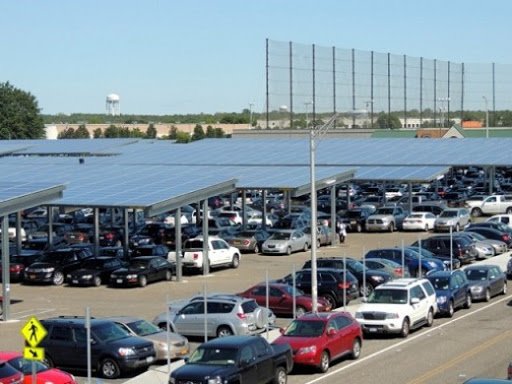
Solar power has “the potential to generate more electricity than Long Island uses each year” concludes the “Long Island Solar Roadmap,” a report issued this spring. It’s available online. The report’s 127 pages are literally a road map to a sunny energy future for this region.
The link is: https://solarroadmap.org/
Many national and international studies done in recent times describe how the cost of solar energy has plummeted with the price of solar panels, inverters and other hardware declining 89 percent between 2010 and last year and efficiencies having skyrocketed.
Solar power now offers the “cheapest … electricity in history,” the International Energy Association declared in its most recent “World Energy Outlook” report.
“The Future of Solar Power: From Unbelievably Cheap to Insanely Cheap,” was the title of an article on Renew Economy. It noted that the price of solar is now at what the International Energy Association and other energy agencies “thought wouldn’t be possible for a century to come.”
I just completed a program in my TV series of Enviro Close-Up TV, entitled “Scott Sklar Solar Pioneer.” For nearly 50 years Sklar has been involved in solar energy. As an aide to U.S. Senator Jacob Javits of New York, Sklar co-founded the Congressional Solar Caucus in 1974. He went on to become the executive director of the Solar Energy Industries Association and political director of The Solar Lobby. He’s now director of the George Washington University Solar Institute. He’s also co-author of Consumer Guide to Solar Energy. You can view the program with Scott, which aired across the U.S. last month, on YouTube at https://www.youtube.com/watch?v=4hzKRjl_DZQ.
In it, Scott details the dramatic strides in the cost and efficiencies of solar power. For a homeowner now, says Scott, a solar photovoltaic electrical system has a six-year “payback” and it’s four years for a solar hot water system. “How exciting,” he says, and he is “shocked to be alive to see” the great advances in solar energy.
The “Long Island Solar Roadmap” tailors the prospects for solar energy on Long Island. It was put together by The Nature Conservancy and Defenders of Wildlife and a consortium of 38 area stakeholders. It opens by declaring: “Solar power offers Long Islanders a host of benefits – reductions in greenhouse gases and air pollution, healthier communities, affordable access to renewable energy, and good paying jobs. Solar can also play a significant role in helping address the climate crisis and meeting the goals of New York’s Climate Leadership and Community Protection Act (CLCPA). This nation-leading 2019 law requires 70 percent of the state’s electricity to be generated from renewable resources by 2030 and 100 percent of electricity to be generated from carbon-free sources by 2040.”
“This report,” it continues, “shows how solar power can be scaled up without impacting the natural areas that are critical for wildlife, water-quality protection, and quality of life on Long Island. Low-impact sites like rooftops, parking lots, and other land already impacted by development, such as capped landfills and remediated brownfields, are excellent locations for the development of commercial and utility-scale arrays. Building solar on low-impact sites minimizes impacts to natural ecosystems and habitat, reduces the potential for land-use conflicts and community opposition, decreases project cost and permitting times, and avoids the harmful release of carbon pollution that results from the conversion of natural areas for development.”
To help build and mobilize community support for solar development on Long Island, state and local governments, LIPA, PSEG Long Island, solar developers, and nonprofit institutions should address the needs of Long Island communities for improved engagement and communication regarding solar siting and development, as well as the needs for greater local benefits and investments in the local workforce.
A statement that accompanies the “Long Island Solar Roadmap” points to, as an example of good solar siting, the solar carport at the H. Lee Dennison Building in Hauppauge. Admiring how it “twinkles in the sun. Since 2011, the solar canopies there, laid out in rows above the parking spaces, have generated shade in the hot summer months and carbon-free electricity all year round, along with a multitude of other benefits.”
“The Long Island Solar Roadmap,” it relates, “explores how to advance solar development on the country’s most populated island while safeguarding the landscapes people value most and expanding clean energy.”
The initiative, it says, “got its start with the awareness of a problem. In 2016, several proposed large solar projects on Long Island were very publicly shot down because they would have required clear-cutting forests.” It quotes Jessica Price, the New York renewable strategy leader for the The Nature Conservancy, saying, “I was having lots of conversations with folks about where solar projects shouldn’t go. What I was really interested in talking about was where they should go.”
“To help figure that out,” the statement continues, “The Nature Conservancy and Defenders of Wildlife brought together utilities, municipalities, solar developers, commercial property owners, farmers and community groups to talk about what they valued and how those values could be used to inform decisions about solar siting.” They found: “Even though we don’t have large swaths of undeveloped land on Long Island, we have plenty of parking lots, warehouse roofs, brownfields, capped landfills and other areas already impacted by development.”
The report also found that 92 percent of Long Islanders surveyed endorse the use of mid-to-large-scale solar, and the technology is especially popular when sited on locations like parking lots as well as when projects are developed and installed by local companies.
It quotes Price declaring that one need not choose between clean energy and undisturbed forests, farmland or other open spaces. “With the right approach we have room for it all.”































